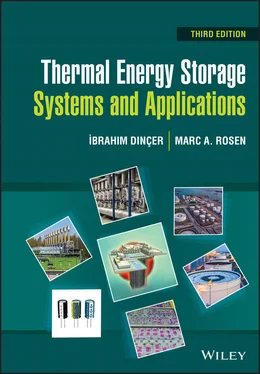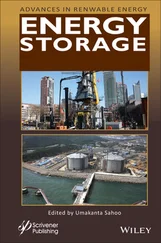The essential first step in the solution of a convection heat transfer problem is to determine whether the boundary layer is laminar or turbulent . These conditions affect the convection heat transfer coefficient and hence the convection heat transfer rates.
The conditions of laminar and turbulent flows on a flat plate are shown in Figure 1.13. In the laminar boundary layer, fluid motion is highly ordered and it is possible to identify streamlines along which particles move. Fluid motion in the turbulent boundary layer, on the other hand, is highly irregular, and is characterized by velocity fluctuations that begin to develop in the transition region (after this, the boundary layer becomes completely turbulent). These fluctuations enhance the transfer of momentum, heat, and species, and hence increase surface friction as well as convection transfer rates. In the laminar sublayer, which is nearly linear, transport is dominated by diffusion and the velocity profile. There is an adjoining buffer layer in which diffusion and turbulent mixing are comparable. In the turbulent region, transport is dominated by turbulent mixing.
The critical Reynolds number is the value of Re for which transition begins, and for external flow it is known to vary from 10 5to 3 × 10 6, depending on the surface roughness, the turbulence level of the free stream, and the nature of the pressure variation along the surface. A representative value of Re is generally assumed for boundary layer calculations:
(1.122) 
For smooth circular tubes, when the Reynolds number is less than 2100, the flow is laminar, and when it is greater than 10 000, the flow is turbulent. The range between these values represents the transition region.
We give a list of various forced‐convection heat transfer correlations (the Nusselt–Reynolds correlations), direct convection heat transfer coefficient equations, along with the relevant parameters and remarks, which are compiled from literature in Table 1.11. In many of these equations, the film temperature is used, and is defined as T fm= ( T s+ T a)/2.
In this chapter, a summary is presented of general introductory aspects of thermodynamics, fluid flow, and heat transfer, and related fundamental definitions and physical quantities, to provide a sufficient thermal sciences background for understanding TES systems and applications, and their operations. The background provided here is also useful in the energy, exergy, and other analyses presented subsequently.
Table 1.11 Forced‐convection heat transfer equations and correlations.
Source: Dincer and Rosen [9].
| Equation or correlation |
| • Correlations for flat plate in external flow |
 |
| • Correlations for circular cylinders in cross‐flow |
| Nu = c Re nPr 1/3for Pr ≥ 0.7 for average; T fm; 0.4 < Re < 4 × 10 6 |
| where |
| c = 0.989 and n = 0.330 for 0.4 < Re < 4 |
| c = 0.911 and n = 0.385 for 4 < Re < 40 |
| c = 0.683 and n = 0.466 for 40 < Re < 4000 |
| c = 0.193 and n = 0.618 for 4000 < Re < 40 000 |
| c = 0.027 and n = 0.805 for 40 000 < Re < 400 000 |
| Nu = c Re nPr s(Pr a/Pr s) 1/4for 0.7 < Pr < 500 for average; T a; 1 < Re < 10 6 |
| where |
| c = 0.750 and n = 0.4 for 1 < Re < 40 |
| c = 0.510 and n = 0.5 for 40 < Re < 1000 |
| c = 0.260 and n = 0.6 for 10 3 < Re < 2 × 10 5 |
| c = 0.076 and n = 0.7 for 2 × 10 5 < Re < 10 6 |
| s = 0.37 for Pr ≤ 10 |
| s = 0.36 for Pr > 10 |
| Nu = 0.3 + [(0.62Re 1/2Pr 1/3)/(1 + (0.4/Pr) 2/3) 1/4][1 + (Re/28 200) 5/8] 4/5for RePr > 0.2 for average; T fm |
| • Correlations for spheres in cross‐flow |
 |
| for average; T a; 3.5 < Re < 7.6 × 10 4; 1 < ( μa / μs ) < 3.2 |
| • Correlation for falling drop |
| Nu = 2 + 0.6Re 1/2Pr 1/3[25( x / D ) −0.7] for average; T a |
aacceleration, m/s2; thermal diffusivity, m2/s; absorptivityAcross‐sectional area, m2; surface area, m2BiBiot numbercmass fraction; constant in Tables 1.10and 1.11cpspecific heat at constant pressure, kJ/kg Kcvspecific heat at constant volume, kJ/kg KCfaverage skin‐friction coefficientddiameter, m; depth normal to flow, mDdiameter, mEenergy, J or kJ; electric potential, V; constantĖenergy rate, W or kWFforce; drag force, NFoFourier numbergacceleration due to gravity (=9.81 m/s2)Gmass flow velocity, kg/s m2GzGraetz numberGrGrashof numberhspecific enthalpy, kJ/kg; heat transfer coefficient, W/m2 °C; head, mHenthalpy, kJ; overall heat transfer coefficient, W/m2 °C; head, mIelectric current, Akthermal conductivity, W/m°CKadiabatic modulusKEkinetic energy, J or kJLthickness, mmmass, kg; constantṁmass flow rate, kg/sMmolecular weight, kg/kmolnmole number, kmol; constant exponent in Tables 1.9and 1.10NuNusselt numberPperimeter, m; pressure, Pa or kPaP*constant‐pressure gradient, Pa or kPaPePeclet numberPEpotential energy, J or kJPrPrandtl numberqheat rate per unit area, W/m2; flow rate per unit width or depthqhheat generation rate per unit volume, W/m3Qheat transfer, J or kJ  heat transfer rate, W or kWrreflectivity; radial coordinate; radial distance, mRgas constant, kJ/kg K; radius, m
heat transfer rate, W or kWrreflectivity; radial coordinate; radial distance, mRgas constant, kJ/kg K; radius, m  universal gas constant, kJ/kg KRtthermal resistance, °C/WRaRayleigh numberReReynolds numbersspecific entropy, kJ/kg; streamline direction; distance, m; constant exponent in Tables 1.10and 1.11Sentropy, kJ/KStStanton numberttime, s; transmissivityTtemperature, °C or KTsabsolute temperature of object surface, Kuspecific internal energy, kJ/kg; velocity in x direction, m/s; variable velocity, m/sUinternal energy, kJ; flow velocity, m/sxquality, kg/kg; cartesian coordinate; variableXlength for plate, mvspecific volume, m3/kg; velocity in y direction, m/s
universal gas constant, kJ/kg KRtthermal resistance, °C/WRaRayleigh numberReReynolds numbersspecific entropy, kJ/kg; streamline direction; distance, m; constant exponent in Tables 1.10and 1.11Sentropy, kJ/KStStanton numberttime, s; transmissivityTtemperature, °C or KTsabsolute temperature of object surface, Kuspecific internal energy, kJ/kg; velocity in x direction, m/s; variable velocity, m/sUinternal energy, kJ; flow velocity, m/sxquality, kg/kg; cartesian coordinate; variableXlength for plate, mvspecific volume, m3/kg; velocity in y direction, m/s  molal specific volume, kmol/kgVvolume, m3; velocity, m/sVxvelocity in x direction, m/sVrvelocity in radial direction, m/sVyvelocity in y direction, m/sVzvelocity in z direction, m/sVθtangential velocity, m/s
molal specific volume, kmol/kgVvolume, m3; velocity, m/sVxvelocity in x direction, m/sVrvelocity in radial direction, m/sVyvelocity in y direction, m/sVzvelocity in z direction, m/sVθtangential velocity, m/s  volumetric flow rate, m3/swvelocity in z direction, m /symole fraction; cartesian coordinate, variable; coordinate normal to flowYcharacteristic dimension (length), mzcartesian coordinate, variableZcompressibility factor ( Eq. (1.24)); elevation, m
volumetric flow rate, m3/swvelocity in z direction, m /symole fraction; cartesian coordinate, variable; coordinate normal to flowYcharacteristic dimension (length), mzcartesian coordinate, variableZcompressibility factor ( Eq. (1.24)); elevation, m
Читать дальше




 heat transfer rate, W or kWrreflectivity; radial coordinate; radial distance, mRgas constant, kJ/kg K; radius, m
heat transfer rate, W or kWrreflectivity; radial coordinate; radial distance, mRgas constant, kJ/kg K; radius, m  universal gas constant, kJ/kg KRtthermal resistance, °C/WRaRayleigh numberReReynolds numbersspecific entropy, kJ/kg; streamline direction; distance, m; constant exponent in Tables 1.10and 1.11Sentropy, kJ/KStStanton numberttime, s; transmissivityTtemperature, °C or KTsabsolute temperature of object surface, Kuspecific internal energy, kJ/kg; velocity in x direction, m/s; variable velocity, m/sUinternal energy, kJ; flow velocity, m/sxquality, kg/kg; cartesian coordinate; variableXlength for plate, mvspecific volume, m3/kg; velocity in y direction, m/s
universal gas constant, kJ/kg KRtthermal resistance, °C/WRaRayleigh numberReReynolds numbersspecific entropy, kJ/kg; streamline direction; distance, m; constant exponent in Tables 1.10and 1.11Sentropy, kJ/KStStanton numberttime, s; transmissivityTtemperature, °C or KTsabsolute temperature of object surface, Kuspecific internal energy, kJ/kg; velocity in x direction, m/s; variable velocity, m/sUinternal energy, kJ; flow velocity, m/sxquality, kg/kg; cartesian coordinate; variableXlength for plate, mvspecific volume, m3/kg; velocity in y direction, m/s  molal specific volume, kmol/kgVvolume, m3; velocity, m/sVxvelocity in x direction, m/sVrvelocity in radial direction, m/sVyvelocity in y direction, m/sVzvelocity in z direction, m/sVθtangential velocity, m/s
molal specific volume, kmol/kgVvolume, m3; velocity, m/sVxvelocity in x direction, m/sVrvelocity in radial direction, m/sVyvelocity in y direction, m/sVzvelocity in z direction, m/sVθtangential velocity, m/s  volumetric flow rate, m3/swvelocity in z direction, m /symole fraction; cartesian coordinate, variable; coordinate normal to flowYcharacteristic dimension (length), mzcartesian coordinate, variableZcompressibility factor ( Eq. (1.24)); elevation, m
volumetric flow rate, m3/swvelocity in z direction, m /symole fraction; cartesian coordinate, variable; coordinate normal to flowYcharacteristic dimension (length), mzcartesian coordinate, variableZcompressibility factor ( Eq. (1.24)); elevation, m










